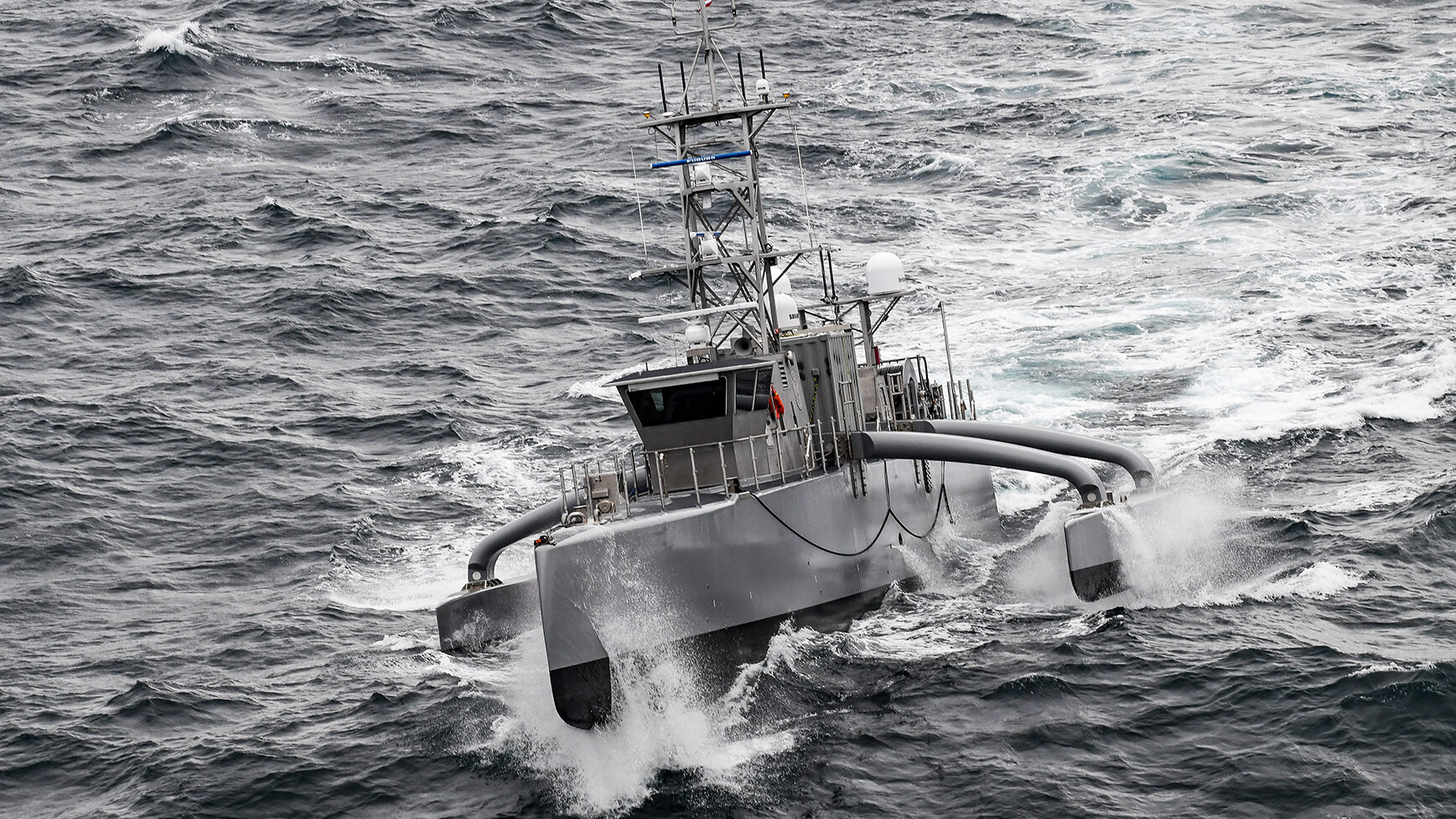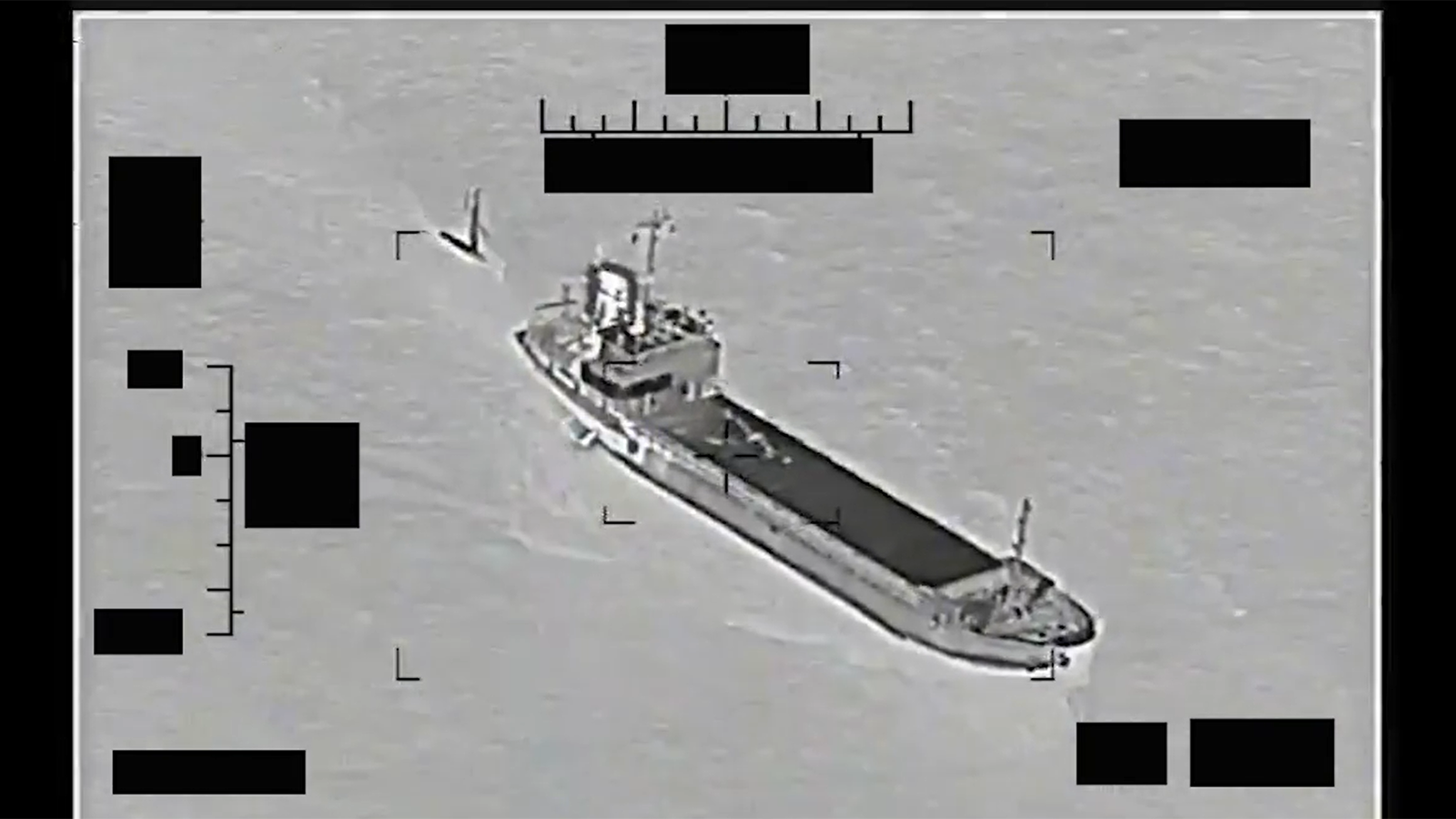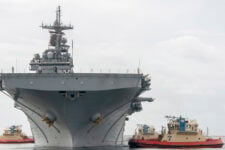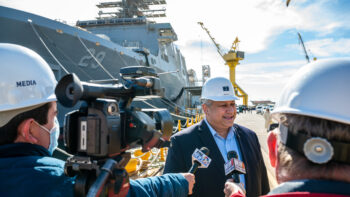
A Seahawk medium displacement unmanned surface vessel participates in U.S. Pacific Fleet’s Unmanned Systems Integrated Battle Problem (UxS IBP) 21, April 21. (U.S. Navy photo by Chief Mass Communication Specialist Shannon Renfroe)
WASHINGTON — Perhaps more than any other service, the US Navy has concentrated its efforts on pushing the use of unmanned and autonomous systems forward into operations. Though the Air Force has flown unmanned drones for years, in 2022 the Navy advanced unmanned and autonomous ships across the fleet, from the experimental vessel Mariner docked outside the Naval Academy in Annapolis, Md., to Saildrones patrolling the Middle East.
And despite the rockiness of its initial pitches to lawmakers back in 2020, this year the service made strides in explaining its strategy and executing it in real time. Here are five stories that put the Navy’s progress over 2022 into perspective.
[This article is one of many in a series in which Breaking Defense reporters look back on the most significant (and entertaining) news stories of 2022 and look forward to what 2023 may hold.]
1. Show, don’t tell: Navy changes strategy to sell unmanned systems to skeptical Congress
Chief of Naval Operations Adm. Michael Gilday set the tone early in the year by laying out the service’s new approach for convincing its skeptics about how to advance unmanned technology: “evolutionary rather than revolutionary.” Catch phrases aside, what that means in practice is that Navy brass was aware it wasn’t winning over any hearts or minds by suggesting the fleet will drastically transform overnight. The road to meaningful change takes time, and takes concrete demonstrations of progress.
2. Aboard the autonomous Mariner, the Navy’s latest unmanned surface ship
This next story is all about Mariner, one of the unmanned surface ships derived from the Strategic Capabilities Office’s Project Overlord program. The story itself is mostly about a tour of the vessel Navy officials provided to reporters — as well as midshipman, congressional staffers and other dignitaries — while it was docked at the Naval Academy in Annapolis, Md. But more importantly, this story brought Project Overlord out of a PowerPoint presentation and into the water. It followed the Navy strategy that the CNO laid out: Show people what a real USV looks like and can do, rather than just talking up events happening in private.

A screengrab from a video showing support ship Shahid Baziar, from Iran’s Islamic Revolutionary Guard Corps Navy unlawfully towing a Saildrone Explorer unmanned surface vessel in international waters of the Arabian Gulf on Aug. 30, 2022. (U.S. Navy video)
3. Iranian ship intercepted while trying to detain American drone
In August the Navy experienced one of the key challenges operating ships with no souls aboard when Iranian paramilitary forces nabbed a US Navy Saildrone in the Middle East. In this case, US 5th Fleet was able to successfully recover the USV from the Iranians and the Navy said the data it carried amounted to unclassified images of the environment. As for the drone itself, Saildrone CEO Richard Jenkins told Breaking Defense he wasn’t bothered by the Iranians tampering with his technology because the USVs are effectively made to be disposable. (Honorable mention: This other story of a very similar situation that broke just weeks later is noteworthy for all the same reasons.)
4. Keeping intrinsic value low key for future USV fleet: Admiral
The incident with Iran reinforced another aspect of the Navy’s unmanned strategy: drone diversity. After the encounter, US 5th Fleet chief Vice Adm. Brad Cooper disclosed his new goal of having 100 unmanned surface vessels operating in his area of responsibility by summer 2023. Further, he added that only about 20 percent of those vessels would be US-owned, with the rest coming from friendly nations. This story reinforces the fact the Navy’s embrace of unmanned systems will be incremental: Each fleet will slowly build up its arsenal of systems based on regional requirements. The story also shows that just because an unmanned vessel isn’t in the US fleet, that doesn’t mean it can’t still contribute to a future fight alongside US allies. (Look no further than the comments of French Navy chief Adm. Pierre Vandier for proof that many in Europe are also heavily investing in unmanned systems.)
5) 3 weeks, 15 unmanned systems: Navy launches ‘Digital Horizon’ exercise in Middle East
Rounding out this list and the Navy’s year is a story about the Digital Horizon exercise that took place in the Middle East in late November. Hosted by US 5th Fleet’s Task Force 59, the event featured 10 systems that the Navy had never before operated in the region. It also included roughly a dozen companies assisting the service either onsite in Bahrain or in remote locations as far as Australia. The exercise was meant to demonstrate what an unmanned, distributed force can do with systems available to the fleet today.






















